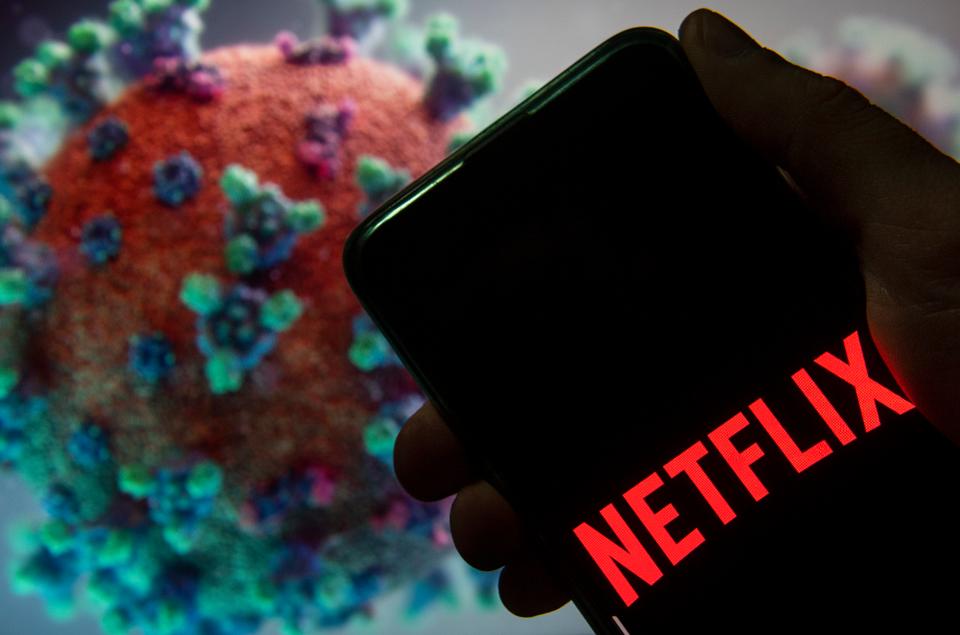Streaming services should lower prices in response to COVID-19
3 min read
Netflix aims to take care of out of work individuals with $100M relief fund. (Sopa Images | Lightrocket Via Getty Images)
By BRADEN STOCKARD
Staff Writer
Streaming services are one of the few businesses that are not being negatively affected by the coronavirus. As some of the only sources still putting out new content, this has allowed them to become a primary source of entertainment since all sports, live shows and theaters have canceled their events.
These streaming services can afford to reduce the price per month so that they can gain viewership and meet the needs of the many Americans who are facing financial hardship, as well as people affected worldwide. I believe that if they make this switch they will gain more viewership and overall respect in the end.
The average cost for a streaming service is around $10.50/month. This may not seem like such a high price when you have a job. However, due to COVID-19, many people are out of work and the ones who aren’t making any money during this time are spending it on essentials and not non-essentials such as streaming services.
According to the Pew Research Center, “Nearly one-in-four U.S. workers, roughly 38.1 million out of the 157.5 million, are employed in the industries most likely to feel an immediate impact from the COVID-19 outbreak, according to an analysis of government data.”
The Bureau of Labor Statistics released a statement regarding national survey data saying, “In March, the unemployment rate increased by 0.9 percentage point to 4.4 percent. This is the largest over-the-month increase in the rate since January 1975, when the increase was also 0.9 percentage point. The number of unemployed persons rose by 1.4 million to 7.1 million in March.”
Last month, USA Today reported inflated prices on critical supplies on major online platforms that could violate price-gouging laws in some states.
Following this report, USA Today found that the Keepa price tracking service came out with a report on Amazon products and found that, “nearly 1 in 6 of products sold directly by Amazon had prices spike 50 percent higher than the 90-day average.”
Although streaming services like Netflix and Disney+ aren’t price-gouging, they still aren’t reducing the price despite the economic hardship caused by COVID-19. As many Americans are unemployed right now, it would not only be considerate, but strategic, of these streaming platforms to reduce the price of the service considering the profits they are making. As everyone is fighting off the urge to leave the house or go stir crazy, now more than ever they just may be able to validate that $5.99 per month subscription.
On March 16, 2020, President Trump announced his 15-day plan to slow the spread of the coronavirus. On that same day, Netflix on Nasdaq was at $296.84/share and as of April 8 they stand at $371.12/share. Netflix has done quite well since March 16 when the initial motions to begin social distancing occurred.
On March 18, Disney on Nasdaq was at $80.75/share and as of April 8 they stand at $101.07/share. It’s not such a significant increase since Disney makes most of their profits off of their parks, which have been closed. The company has relied on Disney+ and other revenue streams as their main sources of income during this time.
Although neither Netflix nor Disney have dropped the prices of their services, they have contributed to national and global relief efforts in the midst of a world-wide crisis.
The parks division of the Walt Disney Company said in an announcement that it donated 150,000 rain ponchos to MedShare, a humanitarian aid organization. The Walt Disney Company also donated 100,000 N95 masks to New York, where the virus has hit the worst, as well as California and Florida. The parks also announced that they would be donating excess food to local food banks near both park locations.
Netflix had pledged $100 million to hundreds of thousands of employees, both inside and outside the Netflix umbrella, who are currently out of work. According to Netflix, “most funds will go towards workers affected by the company’s own halted productions, with $15 million being funneled to third parties and non-profits providing emergency relief to out of work crew and cast.”
As much as it would make sense for the prices of the streaming services to drop in spite of the pandemic, their efforts to help the people being affected by the pandemic are quite generous and selfless. However, whether or not the streaming services have donated to the pandemic, the streaming services are definitely still profiting from this grim situation.











